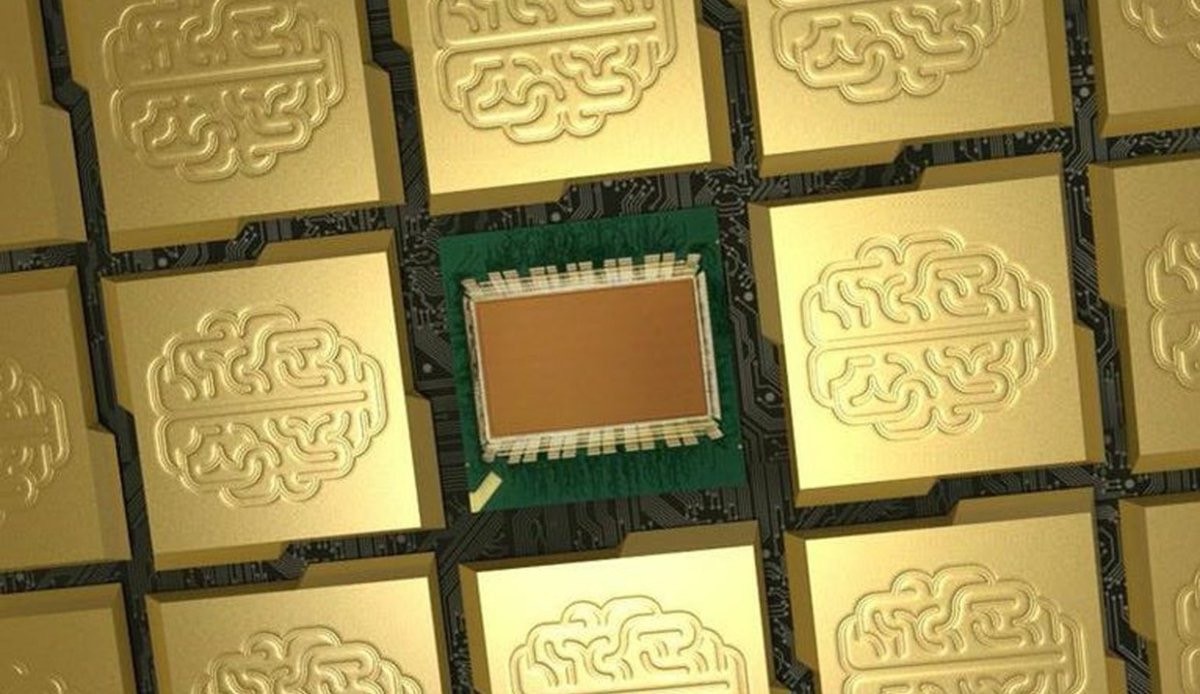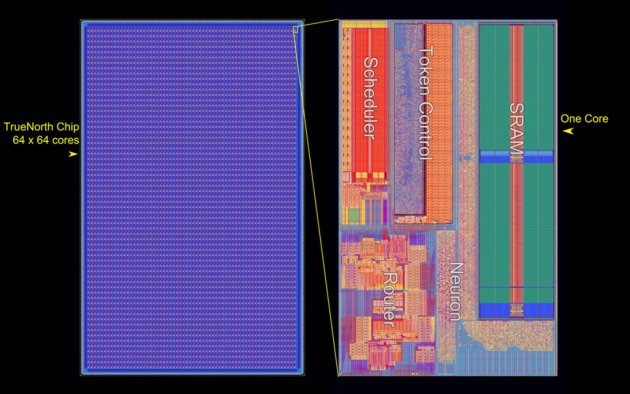IBM assembled a new brain-like system from neuromorphic chips

IBM has been working with DARPA to create neuromorphic chips (Systems of Neuromorphic Adaptive Plastic Scalable Electronics, SyNAPSE) for many years, the project began in 2008. The goal is to create chips and systems whose work would be organized according to the principle of the operation of animal brain neurons (for example, rodents). This is a very difficult task, and the specialists had to spend a lot of time on it. Now, finally, the first significant results of the SyNAPSE project are presented.
The TrueNorth system consists of individual chip modules that work like brain neurons. Connecting neuromorphic chips into the system, the researchers get an artificial neural network. The version that IBM introduced includes 48 million compounds — close to the number of synapses in the rat brain. The presented structure consists of 48 separate chip modules.
TrueNorth supports " deep learning ", a set of machine learning algorithms that attempt to model high-level abstractions in data using architectures consisting of many non-linear transformations.
')
The term “depth” in this case refers to the depth of the model's computation graph — the maximum length between the input and output nodes of a particular architecture. In the case of, for example, a simple neural network of direct distribution, the depth corresponds to the number of layers of the network. The term 'deep learning' focuses on the complexity of learning the internal (deep) layers of a multilayered network that are poorly amenable to classical teaching methods, such as the backpropagation method.

TrueNorth consumes much less energy and takes up less space than traditional computer systems. Thus, a separate TrueNorth chip, containing 5.4 billion transistors, consumes only 70 mW of power. And an Intel processor with 1.4 billion transistors consumes 35 to 140 watts.

Future versions of TrueNorth can be significantly reduced - to a size that allows such a system to be used in a smartphone or smart watch. TrueNorth chips have significant advantages over GPU and FPGA. IBM is hoping that TrueNorth will be the factor that will allow computer systems to enter a new stage of development. New technologies can be used not only to create smartphones or smart watches - neuromorphic chips can also be used in high-performance systems installed in data centers.
Experts say that all this allows us to speed up the data processing process, since the information is not required to be constantly sent and received, as in traditional systems. For example, TrueNorth can identify all the machines in the user's photos, without having to upload each photo to a remote server for processing in the "cloud". For learning such a system does not require a permanent connection to the network.

A typical computing system analyzes information in a certain sequence, tasks are put “in a queue”, so to speak. And neuromorphic chips can simultaneously work with a huge number of operations, performing them in parallel.
An interesting analogy is carried out by IBM specialists with the human brain. So, the corporation compares ordinary computer systems with the left hemisphere. Neuromorphic systems are able to find individual patterns in large data arrays, and interpret this information as the right hemisphere of the brain. Perhaps in the near future, scientists will be able to combine the capabilities of traditional computers and neurofors chips, creating a single super-efficient structure.

In order to explain the principles of operation of neuromorphic chips, the corporation held a seminar in which technical specialists, scientists, and officials took part. Interestingly, a special programming language is needed to work with neuromophor chips, which was also introduced by IBM .
Now the project is at one of the initial stages of development, and the use of TrueNorth in smartphones or smart watches is still far away.
Source: https://habr.com/ru/post/265551/
All Articles